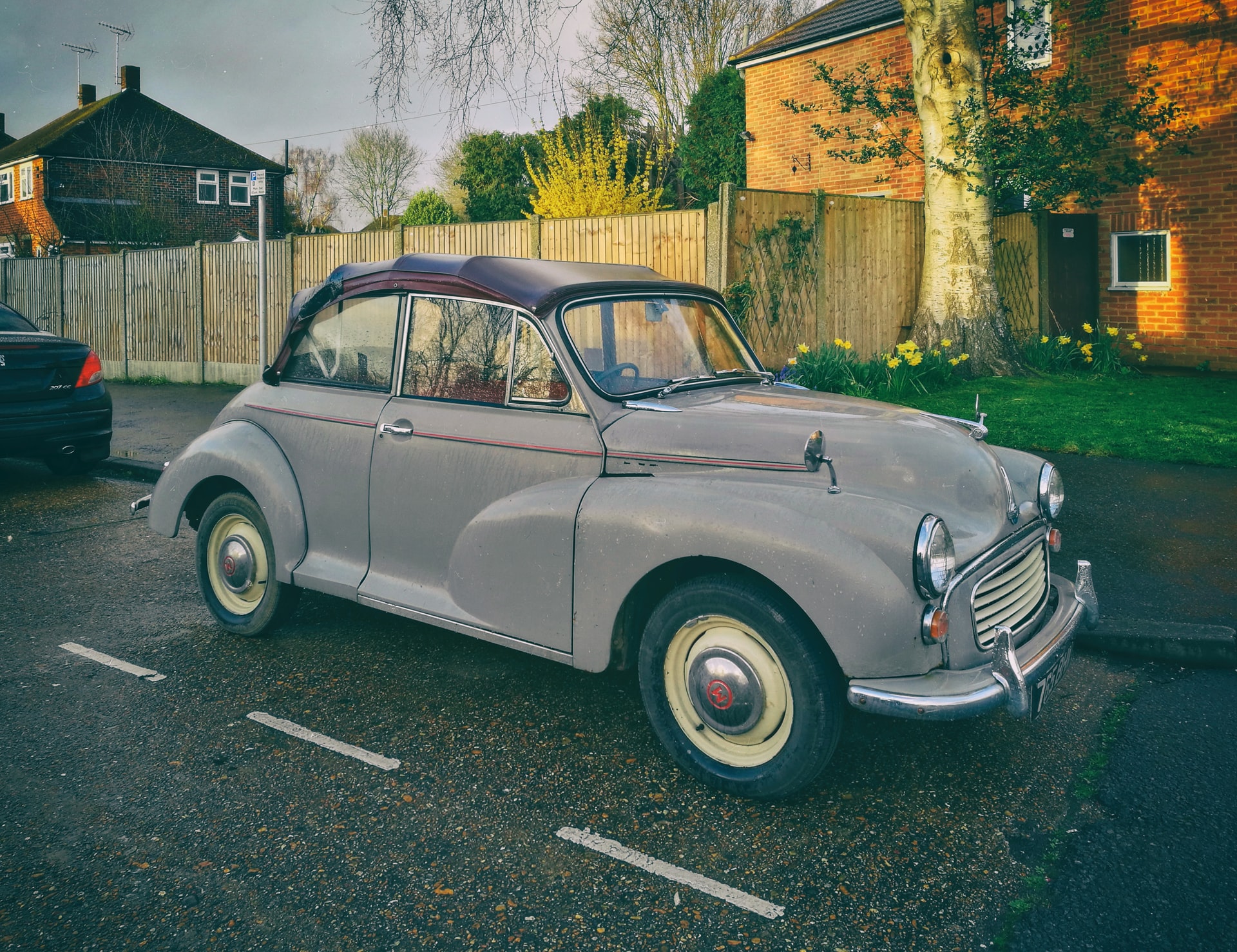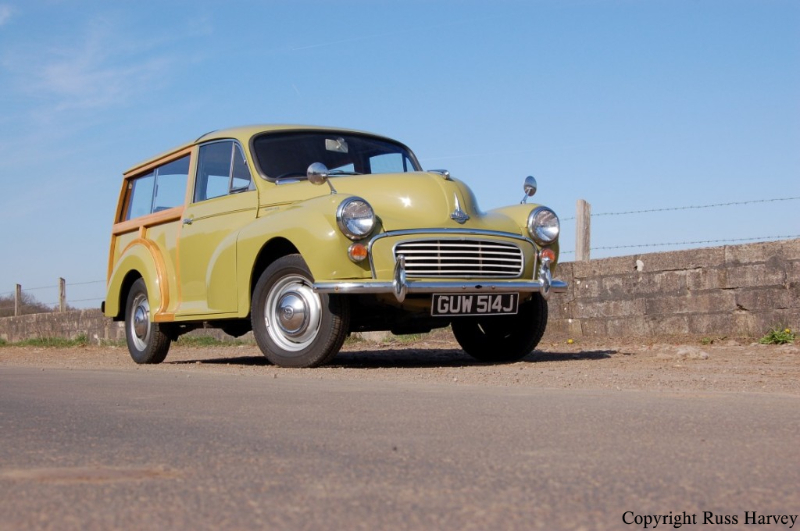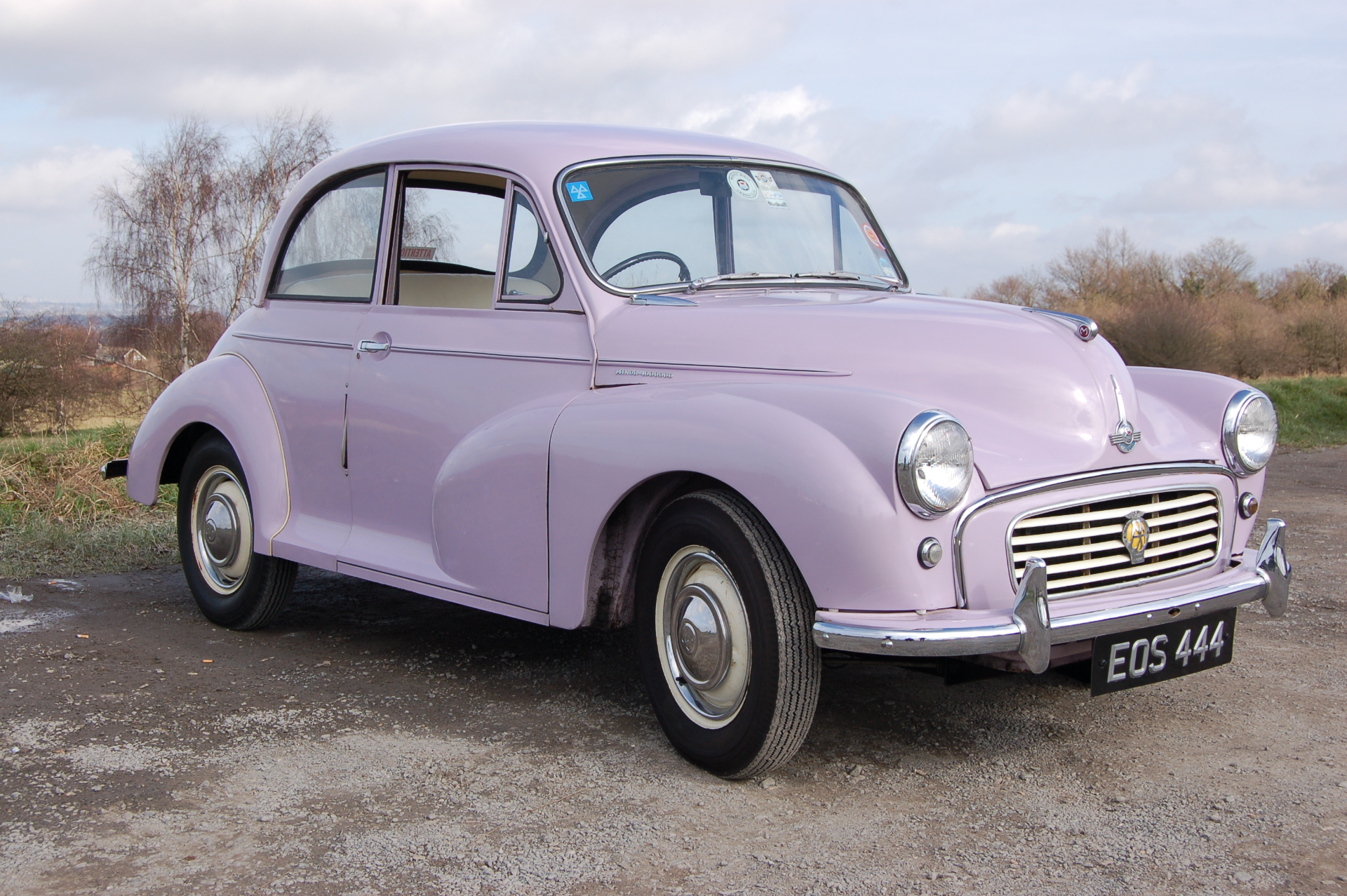Find out more about the stages of Morris Minor restoration. If you are considering restoring an older Morris Minor car, this guide will help you understand what you need to know before you start.
About the Morris Minor
The Morris Minor is an instantly recognisable car. A true British classic and an icon of our auto manufacturing history.
Countless enthusiasts and owners' clubs are dotted around the country, with many people owning and driving Morris Minors produced back in the 1950s and 1960s. Morris Minor began manufacturing back in 1948, and between then and 1972 produced 1.2 million vehicles.
But the Morris Minor cemented its classic status by being one of the first affordable family cars. However, being a classic means many of the models you can find on the second-hand market will likely need some restoring. Repairs and resprays can rejuvenate these iconic vehicles and return them to their former glory.
Even if you aren't familiar with classic car restorations, there is a fantastic network of Morris Minor clubs throughout the country that can point you in the right direction. It's always best to rely on the expertise of people who know when embarking on a project such as a Morris Minor restoration. Alternatively, you can take your vehicle to a professional restorer.
These specialists know all there is to know about Morris Minors, and regardless of the condition of your vehicle, they can have it looking brand new in no time. Most Morris Minor restorers will have seen numerous vehicles through their workshops to the point where they can probably restore them with their eyes closed.
Morris Minor restoration
The first thing to do with any restoration, whether you are doing it yourself or taking your vehicle to a professional restorer, is to work out your expectations. Even if you want professional restorers to handle most of the work, they will usually allow you to help with the restoration as much as you think you can.
It's your car, after all, and most Morris Minor restorations begin with repairing the bodywork and respraying before anything more technical is dealt with.
Steps in the Restoration
Before any respraying or repairing can occur, the first stage in any restoration is to assess the car with a methodical approach.
Your professional restorer will inspect the car with you to find out where the more serious issues might be.
This allows them to plan ahead and determine what problems they might face during the process. Of course, some issues may be difficult to spot, especially since surface rust often signifies more significant structural issues in the body and chrome work.
Once you've determined what work needs to be done, you can remove the door panel work, kick panels and other pieces of trim or glass around the central frame.
This is done to prepare the car's structure to be chemically stripped to remove paint, sealer and rust. Everything is then welded together for a final dip to clean up the welding and any remaining surface rust.

Restorers work in this order as it's the best way to reveal any underlying damage to the vehicle that the paintwork or rust could hide. For smaller, more localised areas needing paint or rust removal, sandblasting is the best method. Once you've removed the paint or rust, your team of restorers will likely treat the area with DA sanders or wire brushes.
Any significantly damaged areas in the bodywork can be cut away and new metal MIG or spot-welded in. With the steel body shell repaired and replaced, your restorer will move on to prepare it for the paint shop. All the metal will be smoothed, and any missing areas in the doors or roof will be filled in with body filler.
Back in the day, the Morris Minor factory would use lead loading, but today we use more modern solutions. Once your restorer has finished this, they will sand down the filled areas to prepare for respraying.The painting process begins by ensuring the bodywork is covered in a coat of etch or epoxy primer.
This substance clings onto the surface of the metal and helps the subsequent layers to be painted to adhere to the surface. If needed, they will also paint several coats of filler. Again they will sand this down before up to 5 coats of cellulose, or 2K paint is applied. Once this has been sanded, the restorer will use a cutting compound on the paint, followed by polishing and glazing.
Are Morris Minors easy to restore?
Morris Minors are widely regarded as one of the easier types of classic cars to restore. However, while some restorers focus on making a profit, most Morris Minor restorations are done for the joy of it. This is especially true for those who want to undertake a DIY restoration and do everything themselves.
It's all part of being a classic car owner, tinkering and bringing a style of car you love back to life. However, if you are focussing on the money, Morris Minors have something to offer your wallet as well as your sentimental inclinations.
Morris Minors typically offer great long-term returns on investment. Once it's restored and you space the operating costs over five years, they are comparable to purchasing and insuring a used modern car.
Of course, to make the most profit, it's best to have a little experience on your side. Doing all the restoration work yourself is the cheapest way to go, but you run the risk of mistakes and failing to complete the restoration properly.
You don't want to end up with a Morris Minor that doesn't work or won't attract enough attention on the market to make you a profit when you sell. But for those keen to try, you can usually find a fairly run-down Morris Minor 1000 on the market for around £200.
Naturally, models at this price will need the most work. This would be fine for an amateur or sentimental restorer who isn't in it for a quick profit in the near future.
If you are, you'll want to aim further up the market where the cars are essentially sound but need a little tweaking to bring them to the next level.
Restoration costs depend on your expectations, which is why they are the first things professional restorers will ask you about.
If you wanted to rebuild the entire car completely, you could easily spend up to £3,000 in each area, from the chassis legs to the engine bay to the interior front and rear seat upholstery and glove box wood.
However, the running costs for Morris Minors are famously low.
As a historic vehicle, your Morris Minor will be exempt from tax and insurance policies for older cars far lower than average.
Even for first-time drivers on their parent's policies, you're looking more along the lines of £700 per year rather than the average £2,000 per year for modern hatchbacks.
Maintenance costs for everyday use are just as cheap, with the performance and fuel economy offering fantastic cost-effectiveness.

For a complete range of Morris Minor Spare Parts, Andrew Eggleton has been providing Morris Minor spare parts for over 30 years. Contact Morris Minor Parts today on (+44) 01225 868 799 for more information.


